To most of us, the very idea of a treehouse is connected with the careless childhood memories and the dream of living high above in the trees. It is never too late to strengthen our connections with the big world outside and these breathtaking treehouses may become a great getaway from the fuss and bustle of our grown-up lives.
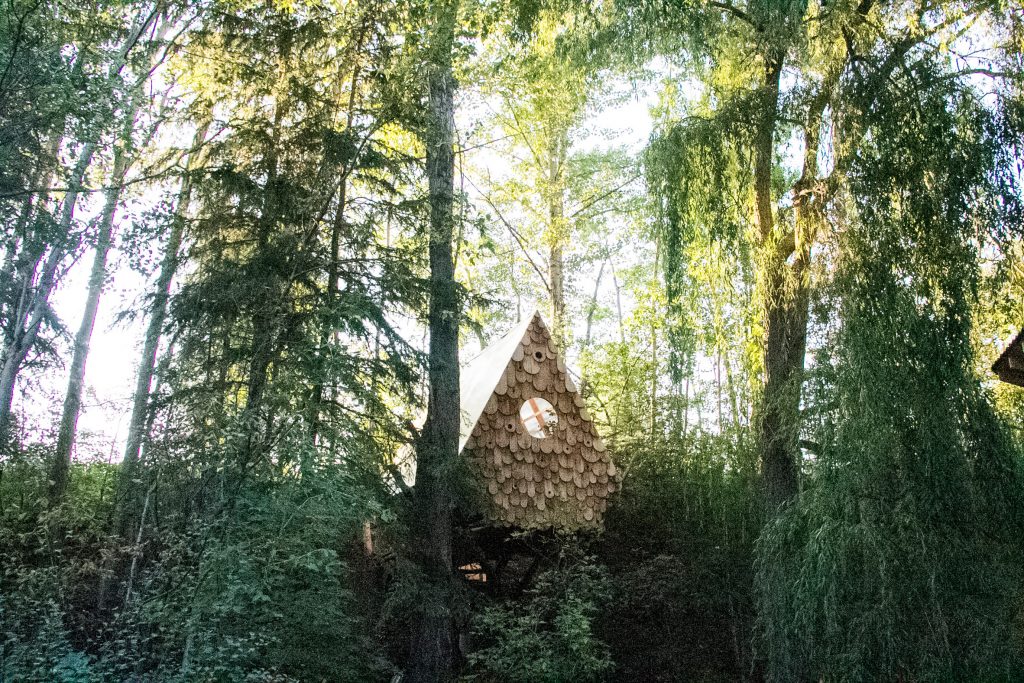
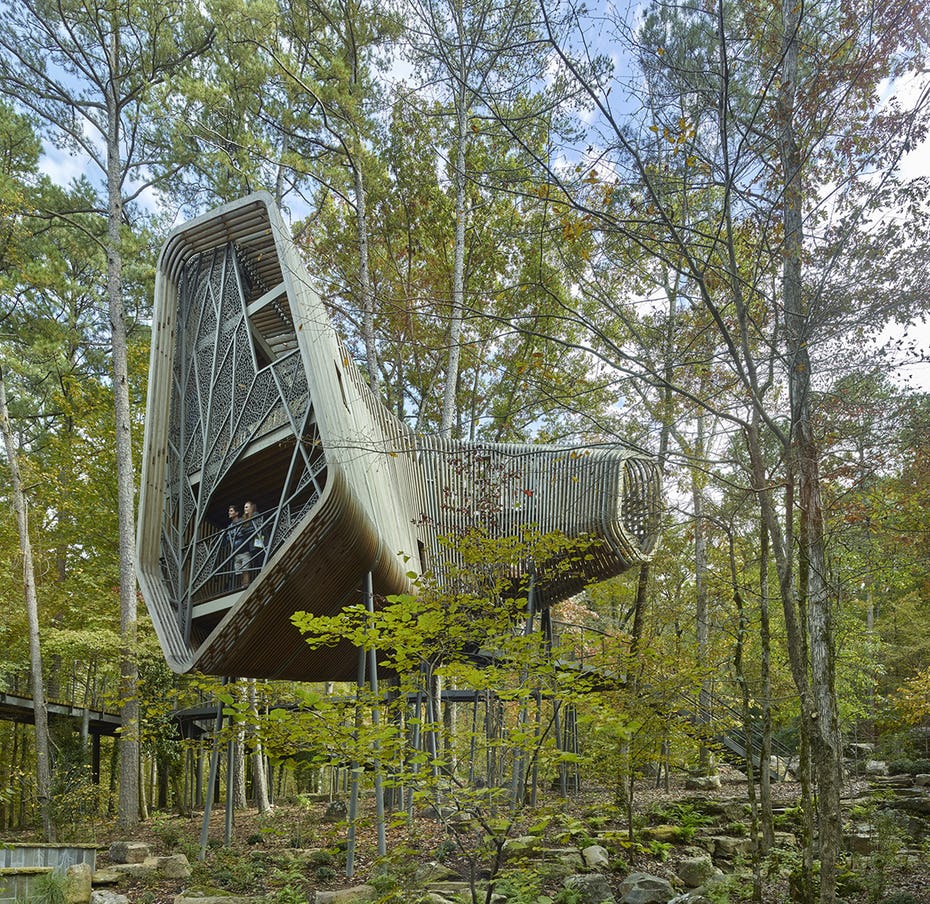
Garvan Woodland Gardens children’s treehouse by Modus Studio
American firm Modus Studio has developed a new curving tree house for the Evans Children’s Adventure Garden in Arkansas. Located at Garvan Woodland Gardens, a 85-hectare nature park near the town of Hot Springs in Ouachita Mountain hillside along Lake Hamilton. The first of three planned tree houses, the projects aims to attract children of the modern world to spending more time in the woods offering an interactive educational experience for them.
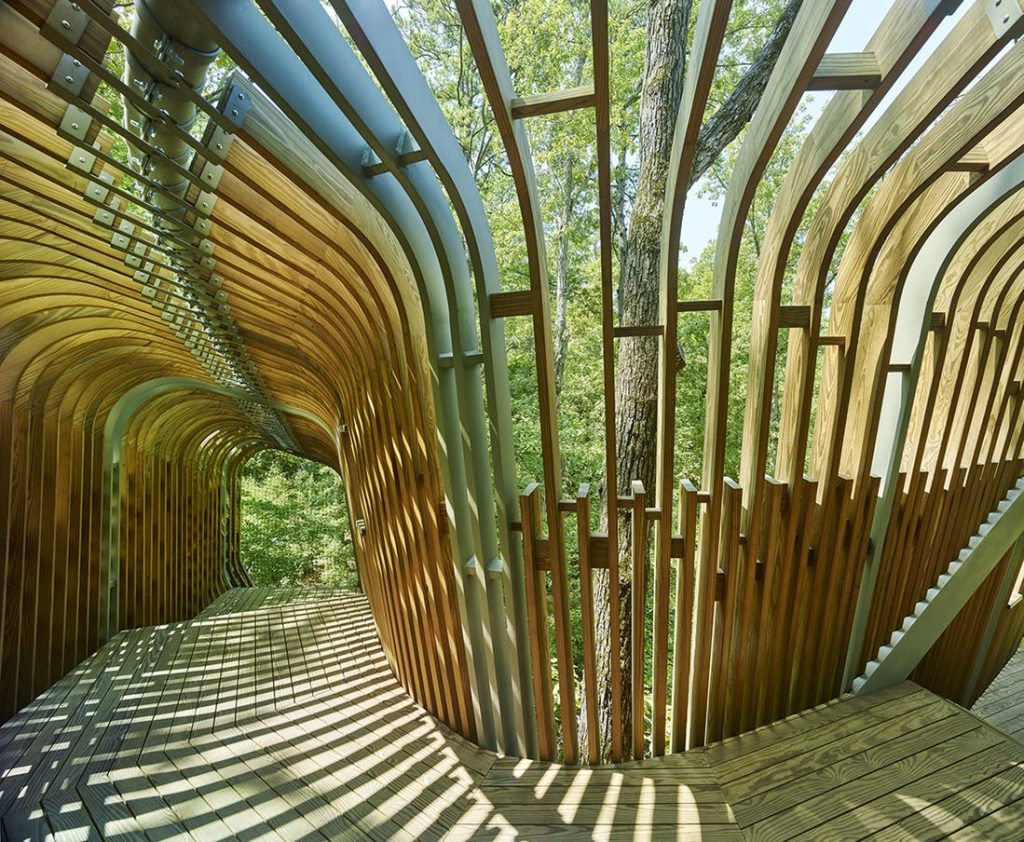
Garvan Woodland Gardens children’s treehouse by Modus Studio
Having spent their own childhood in the wild with its creeks and forests, the local architects chose to merge their own childhood experience with their hard-earned think-make-do philosophy to design a tree house offering a rich visual and tactile environment and strengthen the connections with the world of nature.
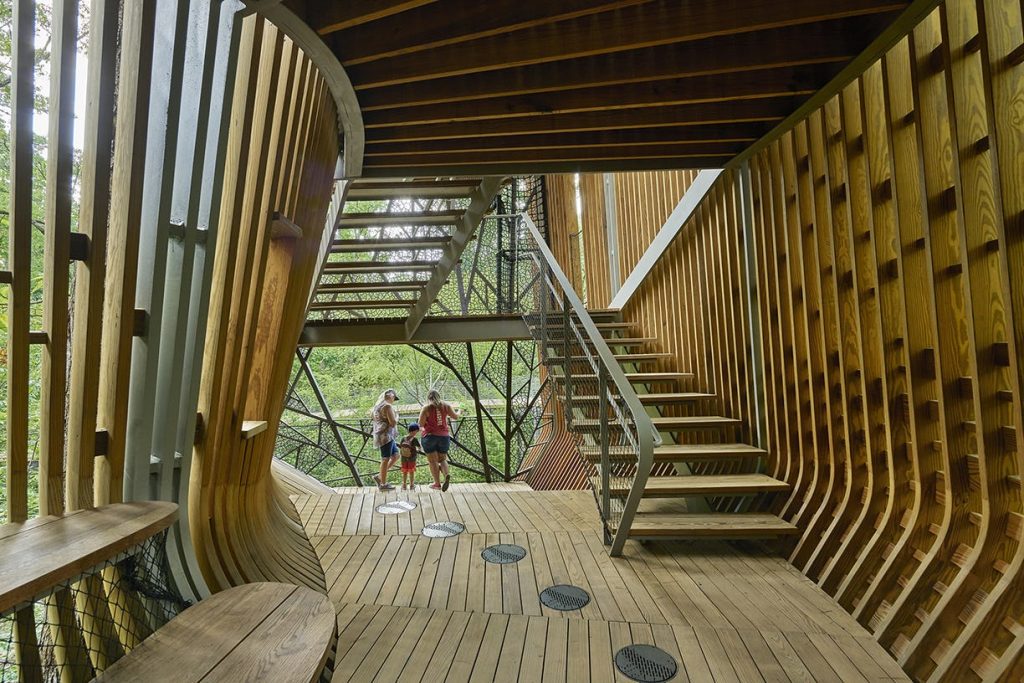
Garvan Woodland Gardens children’s treehouse by Modus Studio
The boomerang-shaped building is lifted 4 to 7.5 metres above the ground to minimize impact on the earth below, while providing visitors with a feeling of being among the tree canopies. Resting on six pairs of steel columns, the structure is composed of 113 ribs. 10 of them, as well as the spine running the length of the bended structure, are made of steel. The rest of the ribs are crafted from southern yellow pine, which was previously thermalized – a process involving heat and steam to increase the wood’s durability and weather-resistance.
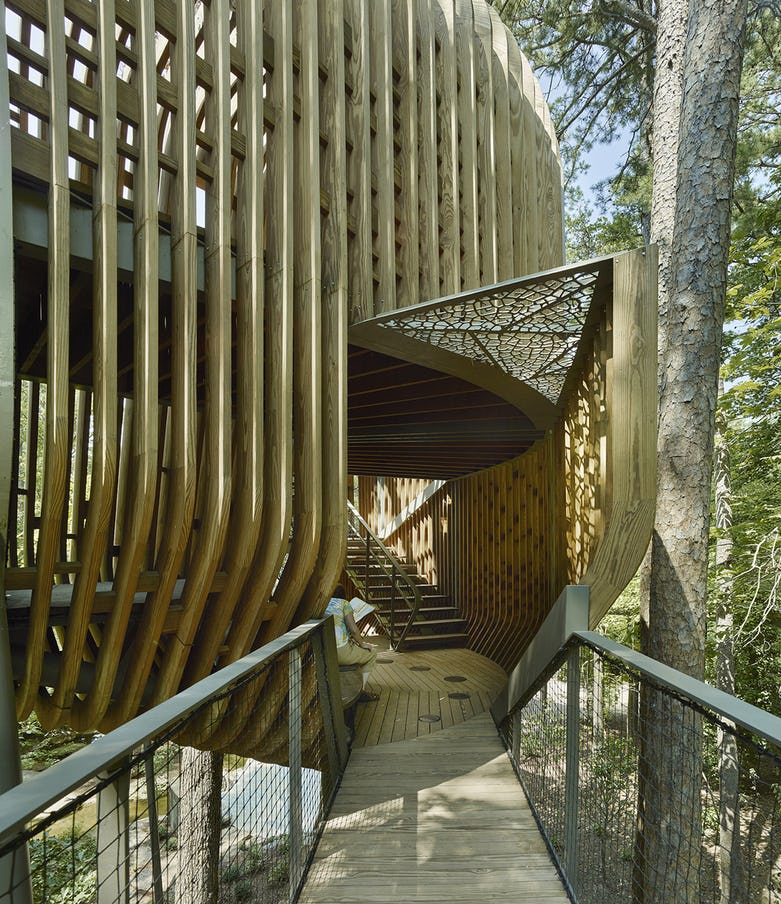
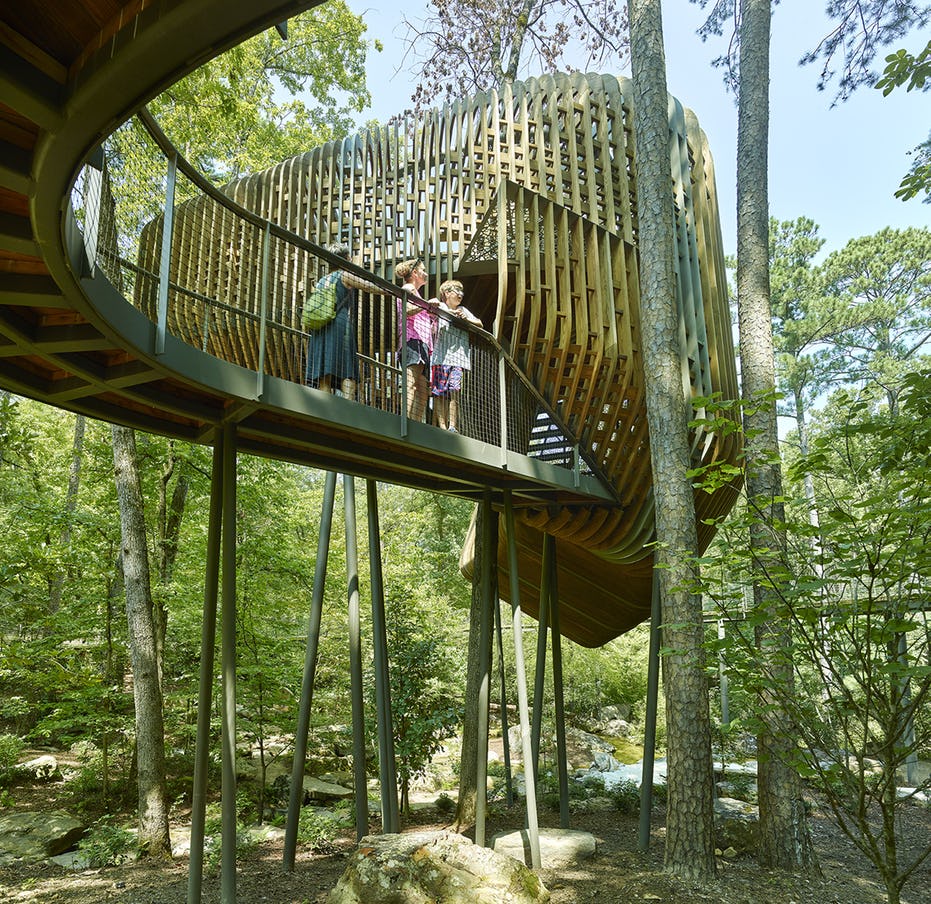
Garvan Woodland Gardens children’s treehouse by Modus Studio
The multi-storey tree house can be accesses via an elevated walkway. The structure has several apertures providing views of the forest around. The larger is covered with a perforated metal screen decorated with a pattern reminiscent of tree branches and leaves, while the smaller one at the ‘tail’ is only protected by metal mesh, which creates an intentional feeling of uneasiness – risk being a part of playing in the tress, according to the team.
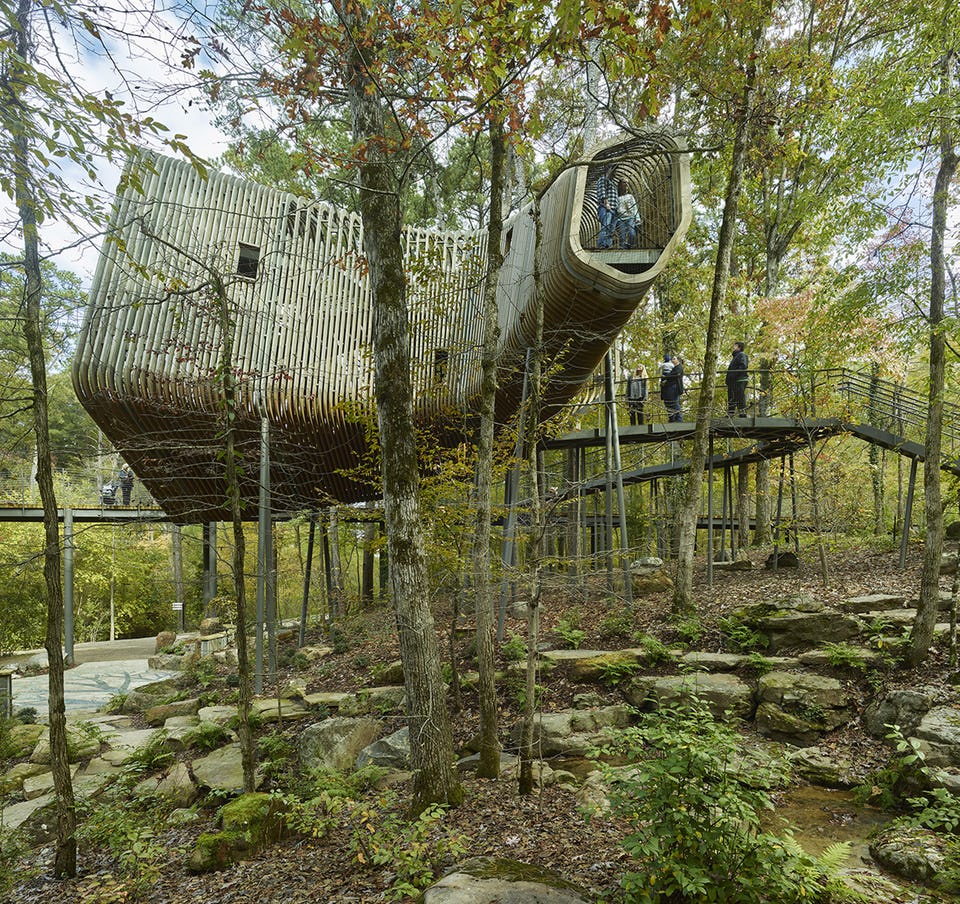
Garvan Woodland Gardens children’s treehouse by Modus Studio
This unique structure which looks like a mysterious figure in the woods is intended to camouflage itself into the landscape – organic, yet alive – and inspire children’s imaginations about the forest.
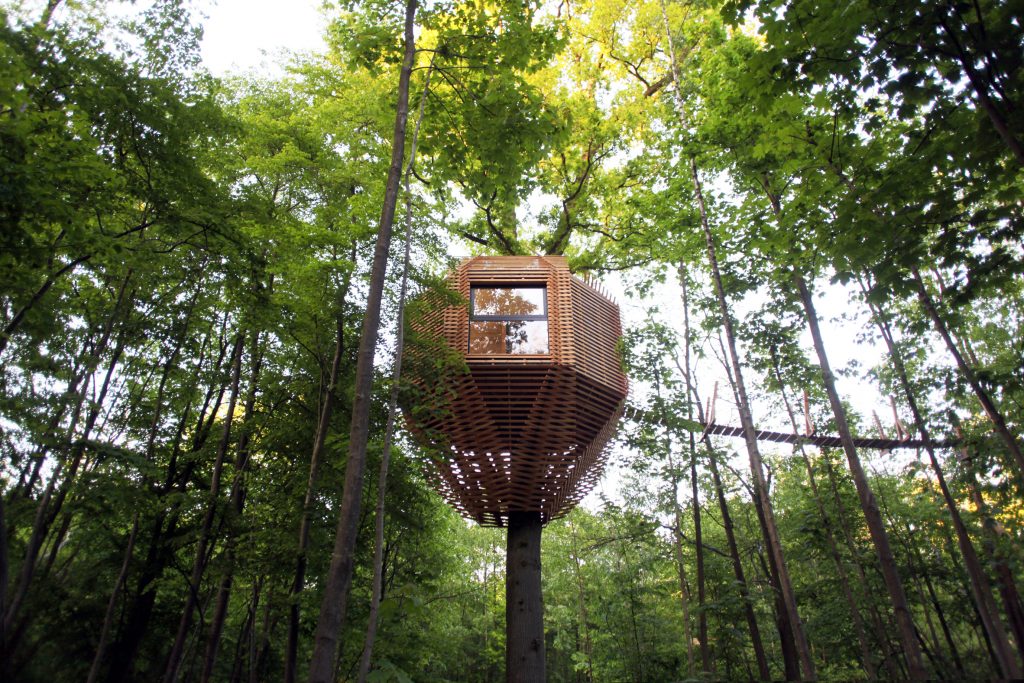
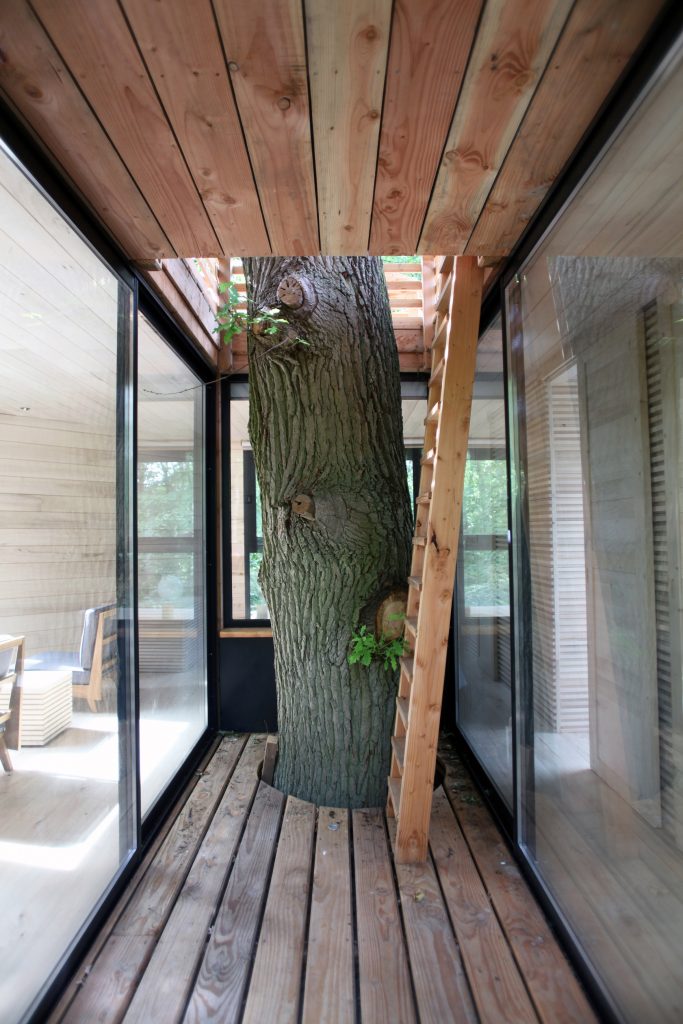
Origin tree house hotel by Atelier Lavit
The unique Origin hotel designed by the Paris-based Atelier Lavit is inspired by the image of a bird-nest. This tailor made elevated hotel room is organized around the trunk of a hundred-year-old oak tree, one of the tallest and most beautiful trees in the domain of the Château de Raray, France, as an attempt to rationalize the construction logic of birds assembling their nests from tree branches. The resulting cabin discreetly stands among the forest, as if it had always been a part of the scenery.
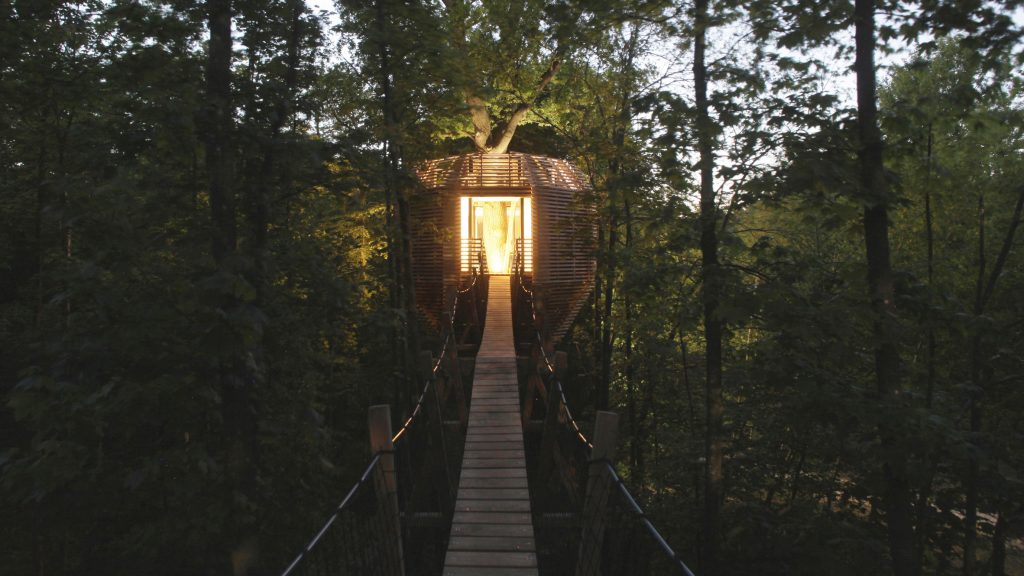
Origin tree house hotel by Atelier Lavit
To access the treehouse the visitor should cross a platform suspended on another tall oak thirty metres away, which includes a heated spa and a chilling area, and use a wooden walkway ten metres off the ground to get straight into the heart of the nest. A wooden ladder invites to continue the ascent in close contact with the tree, to find a large 360 ° panoramic roof-terrace.
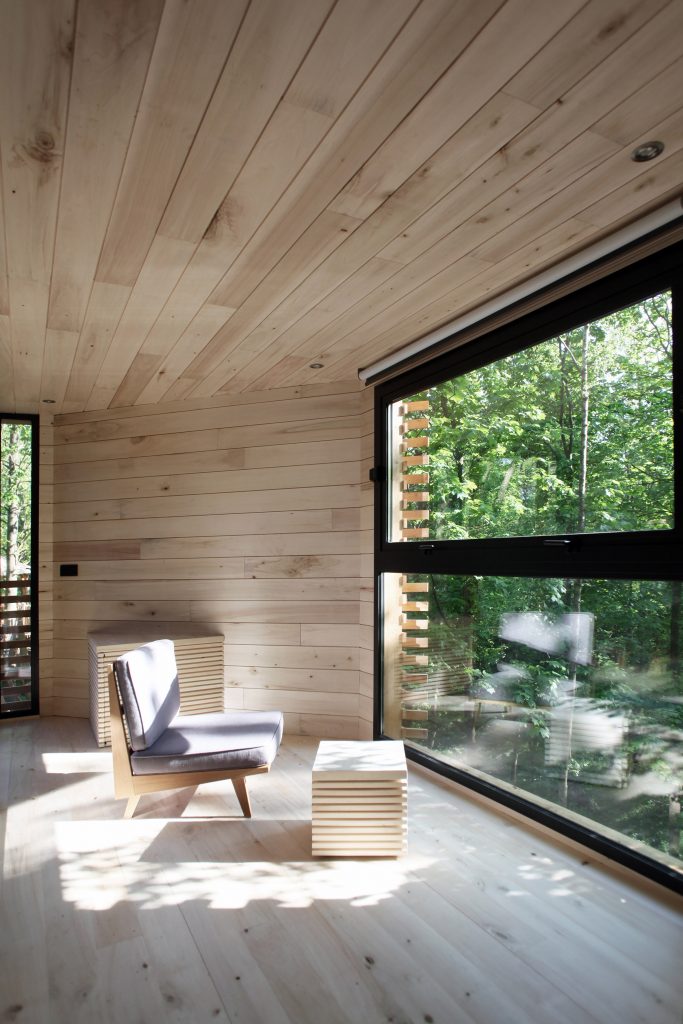
Origin tree house hotel by Atelier Lavit
Inside, a living area can be easily accessed through two large glass doors. The cabin also includes a sleeping area, a narrow corridor with three sliding doors leading to a dressing room, a well-equipped bathroom and a technical closet. Both walls and furniture are lined with light-hued poplar wood. Each living space has large windows overlooking the forest, offering a view of the canopies of the centenarian oaks of the domain.
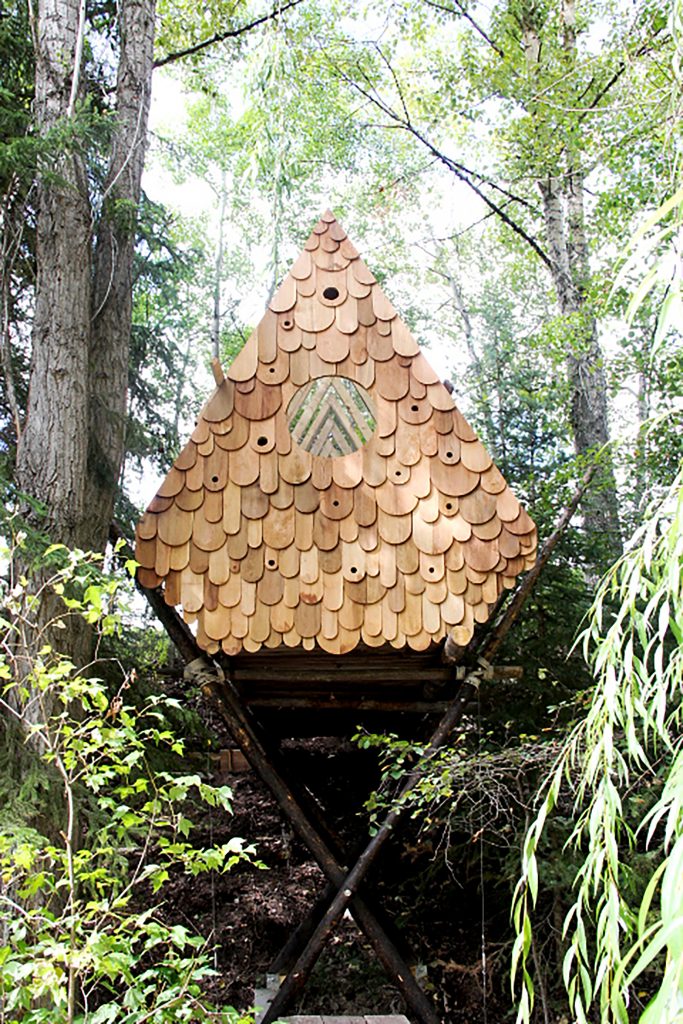
Bird Hut by Studio North (also the header image)
The Bird Hut in a mountainous valley in British Columbia, Canada, designed by the Calgary-based Studio North is not only an inviting place for people to nest. Its whimsical façade includes twelve birdhouses each designed for various local birds. Immersed in the tree canopy, the hut sits 2.7 metres off the ground, with its peak at 6 metres above the ground and birdhouses scattered in between in order to offer nesting opportunities for both large and small birds.
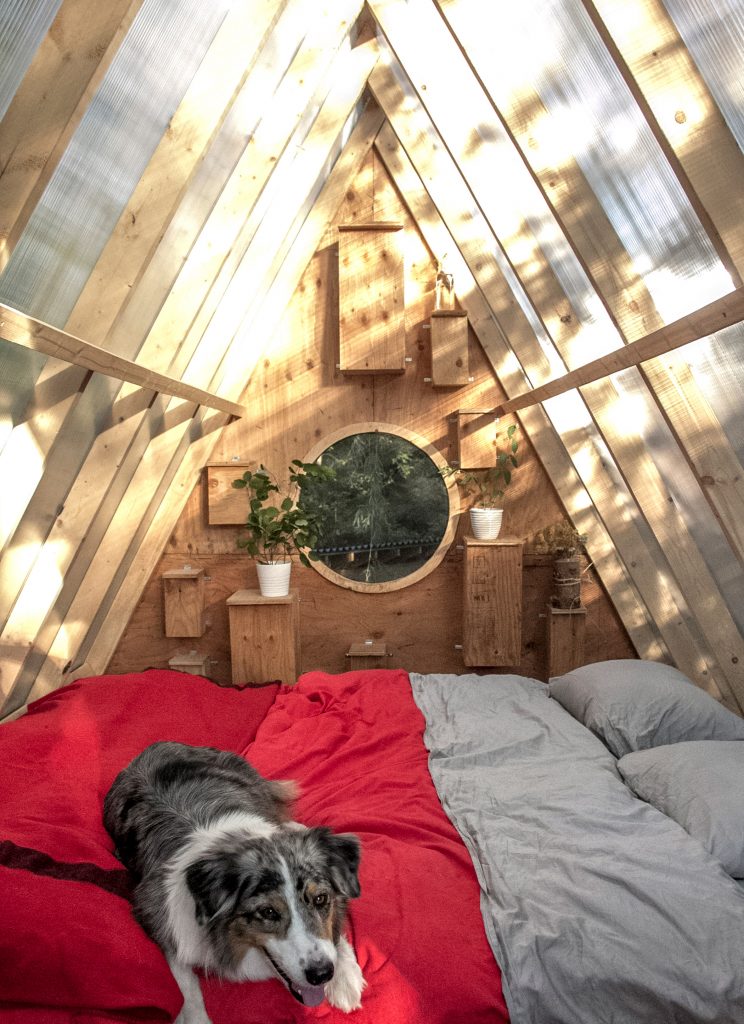
Bird Hut by Studio North
Mimicking the process of a bird building a nest, the materials of the birdhut were scavenged from the immediate surroundings, such as for example pinewood from a nearby forest ravaged by fire or planks reclaimed from an old cabin deck for the platform and cladding of the hut.
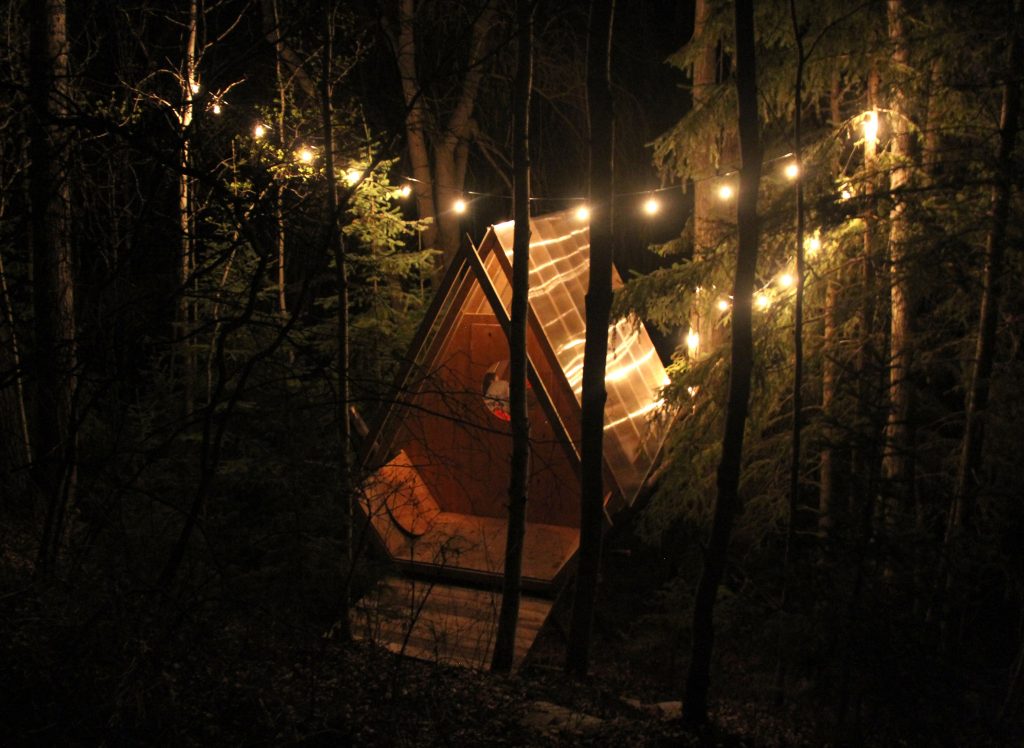
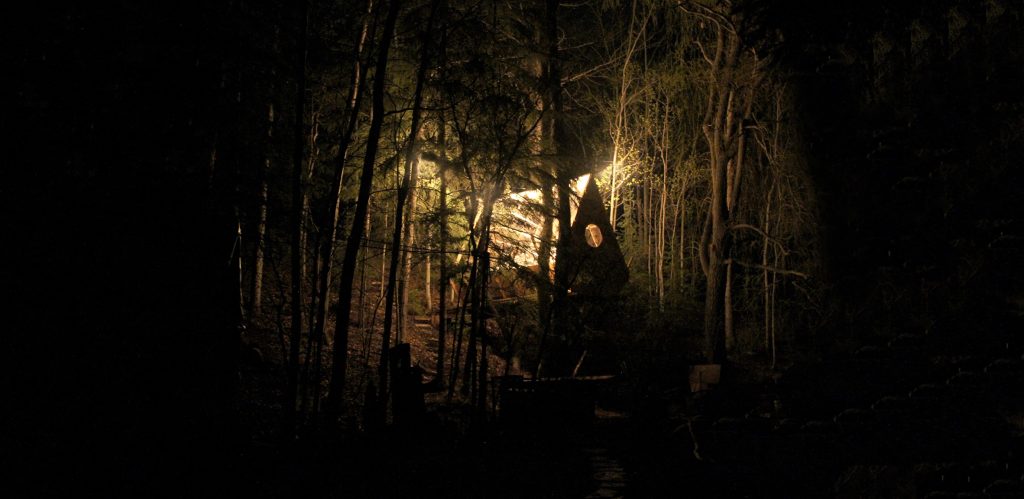
Bird Hut by Studio North
The front facade is clad with western red cedar shingles cut with a custom rounded profile, determined by the size of the birdhouse opening. To give a sense of being in the canopy of the trees, the roof of the birdhut disappears with clear 8mm polycarbonate panels, which also let the birdht act as a kind of a greenhouse heated by the sun and passively ventilated by two circle windows that punctuate the facade and the entry. A bridge connects the birdhut to the hillside and a stone path leads down to a natural spring and campfire.